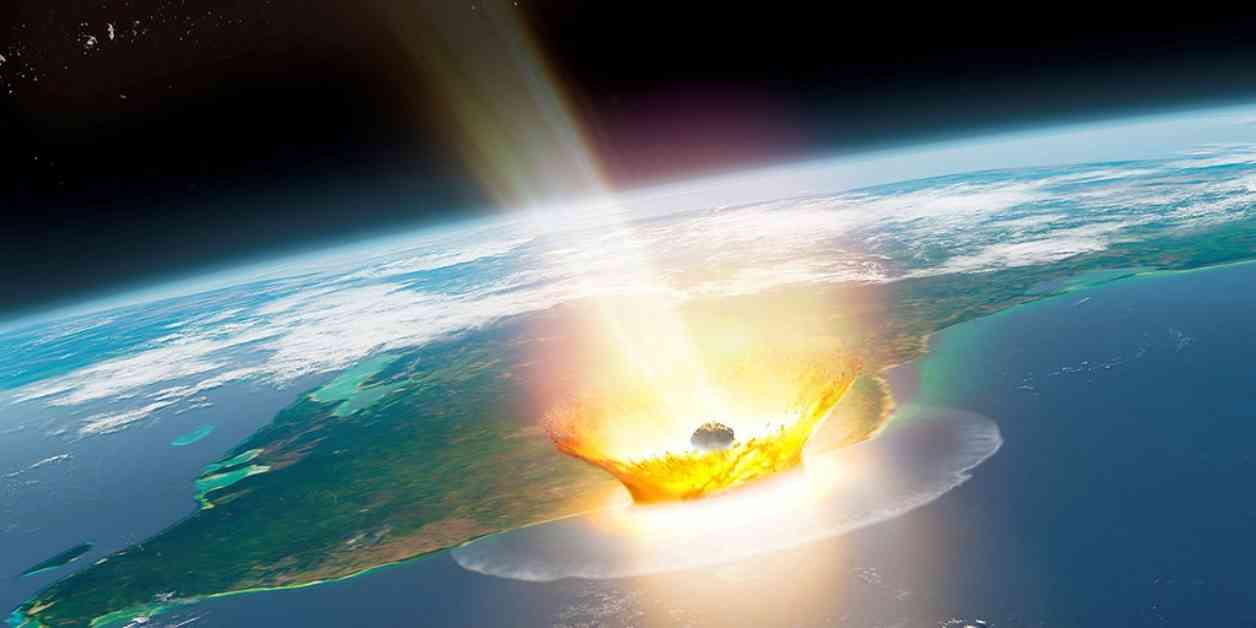Scientists in Albuquerque, New Mexico, have proposed a groundbreaking method to potentially deflect earth-bound asteroids using X-ray technology. This innovative approach involves exploding a nuclear warhead more than a mile from an asteroid’s surface and showering it with X-rays to alter its trajectory. Unlike previous methods depicted in blockbuster movies like “Armageddon” and “Deep Impact,” which involved detonating a nuclear warhead on the asteroid to shatter it into multiple pieces, this new technique aims to transform the asteroid from a single lethal projectile into a shotgun blast of smaller fragments.
The National Academy of Sciences identified planetary defense as a national priority, emphasizing the importance of developing strategies to mitigate the threat posed by asteroids. According to a NASA sky survey, there are approximately 25,000 objects in space capable of causing varying degrees of destruction to Earth. Alarmingly, only about a third of these objects have been detected and tracked, leaving many potential threats lurking undetected in the vast expanse of space.
Many of these hazardous objects remain invisible due to the sun’s glare, making them challenging to identify and track effectively. In 2013, a relatively small asteroid caused chaos in Russia, highlighting the potential risks associated with these celestial bodies. Moreover, a larger asteroid is believed to have triggered the mass extinction of dinosaurs millions of years ago, underscoring the catastrophic consequences of a significant impact event.
Nathan Moore, a physicist at Sandia National Laboratories, emphasized the importance of proactive measures to address the asteroid threat, stating, “Our planet is hit by BB-sized asteroids every day, known as shooting stars. We cannot afford to wait for a large asteroid to pose a significant threat before taking action to deflect it.” Moore and his team conducted experiments using Sandia’s Z machine, the most powerful pulsed-power machine on Earth, to study the effects of sudden shocks on synthetic asteroids.
Exploring X-ray Scissors and Deflection Techniques
The experiments conducted by Moore’s team involved a technique known as X-ray scissors, which aimed to simulate the deflection of a free-floating asteroid in space by removing the influence of friction and gravity for a brief period. By suspending a mock asteroid made of silica in a vacuum and subjecting it to a series of nuclear-intensity explosions generated by the Z machine, the researchers were able to observe the redirection of the asteroid without fragmentation.
Moore explained the significance of the X-ray scissors method, stating, “A mock asteroid suspended in space allows us to ignore Earth’s gravity for a fraction of a second, enabling us to study the effects of X-ray bursts on the asteroid’s surface. This innovative approach could provide valuable insights into redirecting asteroids in space without the risk of creating multiple smaller fragments that could still pose a threat to Earth.”
The experiments conducted by Moore’s team demonstrated the feasibility of using X-ray technology to deflect asteroids, offering a potential solution to mitigate the risks associated with these celestial objects. By carefully calibrating the force applied to a flying rock, scientists believe they can redirect the asteroid without causing it to break apart into smaller, equally dangerous fragments.
Implications for Planetary Defense and Future Research
The development of X-ray technology for asteroid deflection holds significant implications for planetary defense efforts and future research in space exploration. By harnessing the power of X-rays to alter the trajectory of asteroids, scientists may have found a more effective and precise method to protect Earth from potential impact events.
The successful demonstration of X-ray scissors in redirecting a mock asteroid in a laboratory setting paves the way for further studies to scale up this technology for real-world applications. By refining the deflection techniques and enhancing our understanding of asteroid behavior, researchers hope to develop strategies that can effectively safeguard our planet from the threat of hazardous space objects.
As NASA continues to monitor and track potentially hazardous asteroids, the need for innovative solutions to planetary defense becomes increasingly urgent. By leveraging cutting-edge technologies like X-ray technology, scientists aim to enhance our ability to detect, track, and deflect asteroids before they pose a significant risk to Earth.
In conclusion, the development of X-ray technology for asteroid deflection represents a significant step forward in planetary defense efforts. By exploring innovative techniques to alter the trajectory of asteroids and reduce the risk of impact events, scientists are paving the way for a safer and more secure future for humanity on Earth.




